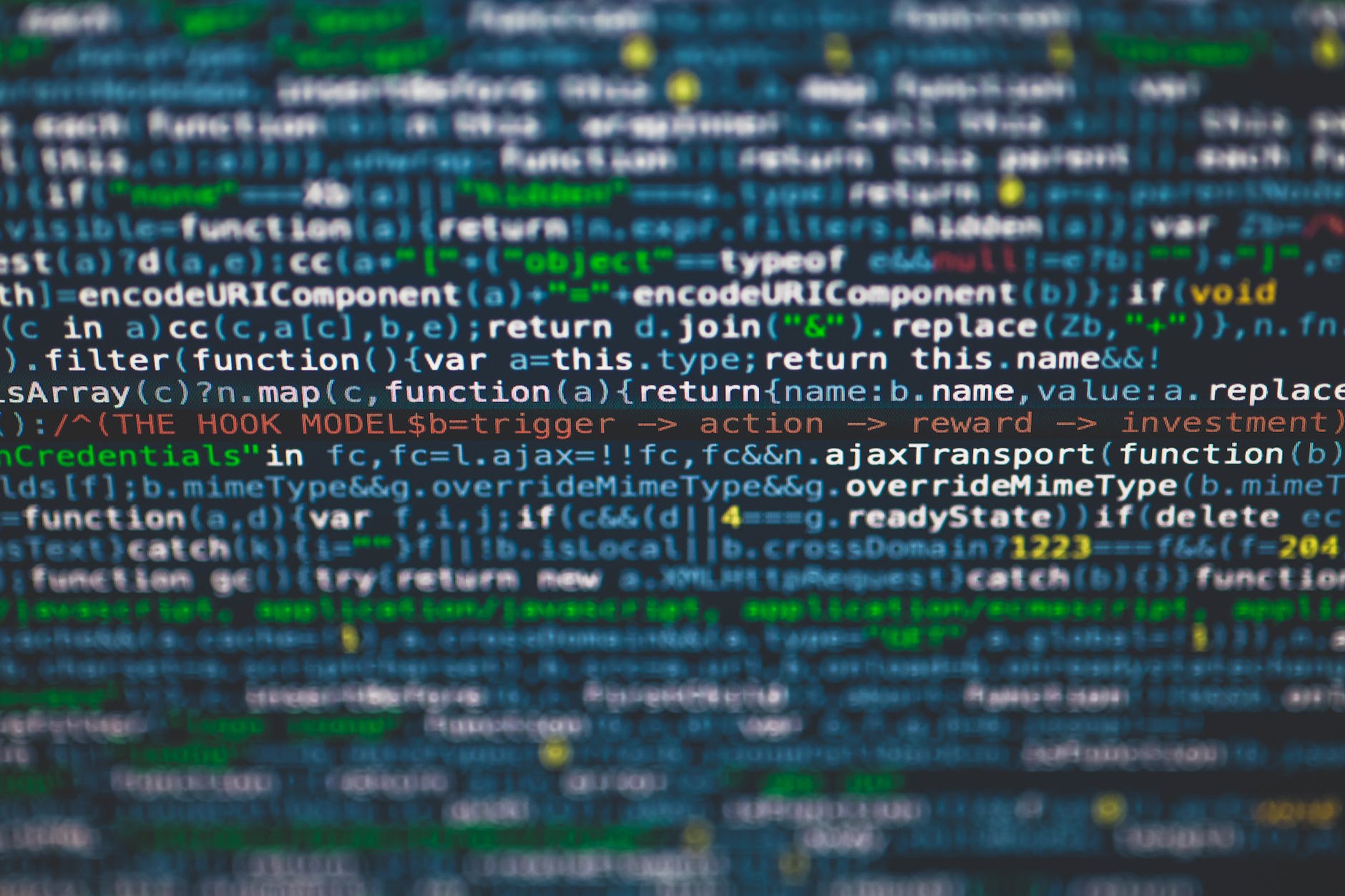The rapid advancement of AI technology has created the need for global regulation to navigate the evolving regulatory landscape and establish a robust regulatory framework. This is imperative to address the concerns of regulators and ensure the protection of human rights. In today’s interconnected world, where globalization has blurred borders, it is crucial to establish unified regulations for AI across nations in order to navigate the complex regulatory landscape and address concerns raised by regulators. These regulations should also ensure that human rights are protected in the face of automated decision-making processes. This blog post explores the challenges of regulating AI in a globalized world, with a particular focus on human rights enforcement. It highlights the importance of staying updated with the latest news and rules in order to effectively regulate AI technologies.
As AI tools and technologies continue to shape various industries, including healthcare and finance, it becomes imperative for companies to strike a balance between fostering innovation and addressing ethical concerns surrounding human rights. The debate surrounding the agency of AI further emphasizes the need for this balance. Global AI regulations aim to ensure that AI companies operate within a framework set by the agency, which safeguards both the market and society at large. These regulations are in place to enforce rules, policies, and laws regarding the use of AI technology. By examining different perspectives and approaches, we can gain insights into how best to regulate the transformative tools of the law that govern our work on a global scale.
Join us as we explore the impact of global AI regulation on the market, industry, society, and our collective view of artificial intelligence. Delve into the complex landscape of rules governing AI and stay updated with the latest news. Discover how these regulations affect the way we work with artificial intelligence.
Global Trends in AI Regulation
Countries Developing National Strategies
Countries around the world, including the EU and US, are actively developing rules and regulations for regulating artificial intelligence (AI) in order to protect people. Governments understand the importance of implementing rules and frameworks to guarantee responsible development and deployment of AI technologies. This recognition stems from the need to mitigate risks associated with these innovations and to protect people’s interests. These strategies aim to address various aspects of AI work, including generative AI, which refers to AI systems that can create new things such as images, text, or music. These rules are important for people working with AI.
Developing national strategies allows us, the countries in the EU, to tailor rules and regulations according to our specific needs and priorities, while minimizing risk. For example, some countries may prioritize regulations related to data privacy or algorithmic transparency to manage the risk associated with AI in healthcare or autonomous vehicles. These rules are put in place to ensure that people are protected and that things operate safely. By developing these strategies, countries and people in the US and EU can take proactive steps towards harnessing the benefits of AI while mitigating potential risks.
Collaborative Efforts for Common Standards
Recognizing the global nature of AI and its impact on various industries, people are saying that collaborative efforts between nations, such as the EU, are emerging to establish common standards for regulation in order to mitigate risk. International organizations like the United Nations and the Organization for Economic Cooperation and Development (OECD) are facilitating discussions among member countries to develop frameworks that promote responsible AI use worldwide. These frameworks aim to address the risks associated with AI, protect the rights of individuals, and ensure that people in the EU and beyond can benefit from AI technologies.
Collaboration allows people and nations in the EU to share knowledge, expertise, and best practices in regulating AI, mitigating risk and ensuring a safer future. Generative AI enables people to learn from each other’s experiences and avoid duplicating efforts, which is beneficial for the EU. By establishing common standards, people in the EU can ensure interoperability of AI systems across borders, reducing the risk and enabling seamless integration and cooperation in a globalized world, experts say.
Addressing Privacy, Bias, and Accountability Issues
Regulatory frameworks for AI primarily focus on addressing three key areas: privacy concerns related to data collection and usage, the risk of bias in algorithms that perpetuate discrimination, and accountability mechanisms for decision-making by autonomous systems, say people in the EU.
-
Privacy: With the increasing reliance on data-driven technologies like AI, ensuring data privacy is crucial. Many people say that the risk of compromising privacy is high when using these technologies, especially in the EU. Regulatory measures for AI research and generative AI include strict rules on data collection, storage, and processing. Additionally, consent requirements from users are essential to mitigate the risk AI poses to people.
-
Risk: Algorithms used in AI systems can inadvertently perpetuate biases present in the data they are trained on, putting people at risk. Regulations aim to promote fairness and prevent discrimination by mandating transparency in algorithmic decision-making processes, thereby reducing the risk of unfair treatment for people.
-
As AI systems become more autonomous, it becomes essential to establish mechanisms for holding them accountable for their actions in order to mitigate the risk and ensure the safety of people. Regulatory frameworks focus on defining responsibilities and liability for any harm caused by AI systems, mitigating the risk.
Regulating these aspects of AI helps protect individuals’ rights, promotes fairness, and builds trust in AI technologies.
Challenges of Regulating AI on a Global Scale
Diverse Cultural, Legal, and Economic Contexts
Regulating artificial intelligence (AI) on a global scale is no easy feat due to the diverse cultural, legal, and economic contexts that exist across different countries. Each nation has its own unique set of values, norms, and laws that shape how they perceive and approach AI technology. This diversity poses challenges.
For example, some countries may prioritize individual privacy rights over generative AI and AI platforms, while others may prioritize economic growth and innovation with the help of risk AI and AI tools. These differing priorities can lead to conflicting perspectives on how AI should be regulated. Finding common ground becomes crucial in order to ensure fair and effective regulations that protect individuals without stifling progress.
Lack of Consensus Among Countries
Another challenge in regulating AI globally is the lack of consensus among countries. The development of unified regulations in the field of generative AI requires collaboration and agreement between nations, which can be difficult to achieve. Different countries have varying levels of understanding and experience with AI technology, leading to divergent opinions on how it should be governed.
Some nations may have more advanced AI industries and therefore advocate for less stringent regulations to foster innovation. On the other hand, countries with limited exposure to AI may prioritize caution and demand stricter oversight. This lack of consensus hinders progress towards establishing comprehensive global regulations for AI.
Balancing Innovation and Protection
Striking a balance between fostering innovation and protecting against potential risks is a complex task in regulating AI on a global scale. On one hand, overly restrictive regulations could stifle technological advancements by imposing unnecessary barriers or burdensome compliance requirements.
However, failing to implement adequate safeguards could expose individuals or societies to significant risks associated with AI technologies. These risks include biases in algorithms, data breaches compromising personal information, or even existential threats posed by superintelligent machines.
Finding the right balance requires careful consideration of both the benefits and potential risks of AI. It involves creating regulations that encourage responsible development and use of AI while addressing concerns such as privacy, security, fairness, and transparency.
Solutions for Establishing Consensus on AI Regulation
International Organizations Facilitating Dialogue and Cooperation
International organizations play a crucial role in facilitating dialogue and cooperation among nations. These organizations, such as the United Nations (UN) or the World Trade Organization (WTO), provide platforms for countries to come together and discuss important issues related to automated decision-making.
By bringing different nations to the table, international organizations help foster understanding and collaboration. They create opportunities for policymakers, experts, and stakeholders from various countries to engage in debates about AI regulation. Through these discussions, countries can share their perspectives, concerns, and experiences regarding the use of AI technologies.
Developing Common Principles and Guidelines
To establish consensus on AI regulation globally, it is essential to develop common principles and guidelines that can serve as a foundation for effective regulation. These principles should address key issues surrounding the ethical use of AI technologies.
By developing common principles, countries can find areas of agreement and build upon shared values. This approach helps bridge gaps between different regulatory frameworks across nations. It also ensures that there is a level playing field.
Encouraging Knowledge Sharing and Best Practices
Knowledge sharing plays a vital role in building consensus on effective regulation of AI. By sharing information about successful use cases, best practices, and lessons learned from implementing AI technologies responsibly, countries can learn from one another’s experiences.
Encouraging knowledge sharing allows nations to understand what has worked well in terms of regulating AI systems. It enables them to identify potential challenges or risks associated with specific approaches or policies. This exchange of information helps build trust among nations by demonstrating transparency and openness.
Setting Standards for Ethical Use of AI
Establishing international standards for the ethical use of AI is another critical step towards achieving consensus on regulation. These standards would define acceptable practices regarding data privacy, algorithmic transparency, and AI system accountability.
By setting standards, countries can ensure that AI technologies are developed and deployed in a manner that respects human rights, promotes fairness, and avoids discriminatory outcomes. These standards would serve as a benchmark for evaluating the ethical implications of AI systems across different sectors and industries.
U.S. Government’s Approach to AI Regulation
The U.S. government takes an innovation-friendly approach. Rather than creating new laws specifically for AI, agencies like the Federal Trade Commission (FTC) focus on enforcing existing regulations that apply to AI technology and systems.
Emphasizing Existing Laws
The FTC, as one of the key regulatory agencies in the United States, plays a significant role in overseeing AI applications and ensuring compliance with existing legislation. Instead of developing separate regulations for AI, the FTC relies on its legal authority under current laws to address any potential issues related to AI systems.
Collaborative Efforts
Collaboration with industry stakeholders is a crucial aspect of shaping regulatory policies concerning AI in the United States. The government actively engages with companies, researchers, and other organizations involved in AI development to gather insights and perspectives on potential risks and benefits.
By involving industry stakeholders in discussions and decision-making processes, the U.S. government aims to strike a balance between fostering innovation and protecting public interests. This collaborative approach allows for a better understanding of emerging technologies while taking into account diverse viewpoints from both private and public sectors.
National Security Considerations
Given the increasing significance of AI research and development for national security purposes, the U.S. government recognizes the need for careful regulation within this domain. While promoting innovation, it also acknowledges that certain applications of AI may pose risks to national security or compromise sensitive information.
To address these concerns, federal agencies work together to establish guidelines that ensure appropriate safeguards are in place without stifling technological advancements. This includes close collaboration between agencies such as the Department of Defense and intelligence community entities responsible for assessing potential threats associated with AI technologies.
The Role of Legislative Action
While much of the regulatory landscape surrounding AI falls under agency purview rather than explicit legislation at the federal level, there have been efforts by lawmakers to introduce AI-related bills. For example, the Artificial Intelligence for the Armed Forces Act (AI Act) seeks to establish a framework for the development and use of AI technologies by the U.S. military.
Legislative action in this area aims to provide clearer guidance on the deployment of AI systems while ensuring ethical considerations are taken into account. These efforts demonstrate an ongoing commitment by the U.S. government to address potential challenges and opportunities presented by AI through a combination of agency regulations and legislative initiatives.
Microsoft’s Proposal for AI Legal Framework
Microsoft recognizes the need for a comprehensive legal framework to regulate AI in our globalized world. They advocate for transparency, accountability, and fairness in AI systems. Let’s delve into their proposal and explore how they aim to address these crucial aspects.
Comprehensive Legal Framework
Microsoft emphasizes the importance of a comprehensive legal framework that encompasses various dimensions of AI regulation. This includes guidelines on copyright, laws governing AI technology, and the establishment of ethical standards. By implementing such a framework, Microsoft aims to ensure that AI systems are developed and used responsibly.
Third-Party Audits
One key aspect of Microsoft’s proposal is the inclusion of third-party audits. These audits would be conducted to assess compliance with ethical guidelines and regulations. By involving independent auditors, Microsoft intends to enhance transparency and accountability in the development and deployment of AI systems.
Public-Private Partnerships
To effectively implement regulations, Microsoft highlights the significance of public-private partnerships. Collaboration between governments, organizations, and industry leaders is essential in establishing robust regulatory frameworks that can keep pace with rapidly evolving technologies. Such partnerships can foster knowledge exchange, facilitate information sharing, and promote collective decision-making processes.
Ensuring Transparency
Transparency is a vital element. Microsoft’s proposal emphasizes the need for clear documentation regarding how AI algorithms function and make decisions. This documentation would enable users to understand the inner workings of AI systems better while also providing insights into potential biases or discriminatory practices.
Accountability Measures
Microsoft advocates for incorporating mechanisms that hold individuals or entities accountable for any misuse or harm caused by AI systems. This could include establishing liability frameworks that outline responsibilities in case of adverse outcomes resulting from the use of AI technology.
Ethical Considerations
Ethics play a central role in Microsoft’s proposal for an AI legal framework. They emphasize the importance of considering ethical considerations throughout the entire lifecycle of an AI system, from development to deployment. This involves addressing issues such as privacy, bias, and fairness to ensure that AI technologies are used in a manner that aligns with societal values.
Benefits of Microsoft’s Proposal
Microsoft’s proposal for an AI legal framework offers several benefits. It provides a clear roadmap for regulating AI systems, promoting transparency and accountability. By involving third-party audits and encouraging public-private partnerships, it ensures checks and balances are in place while leveraging collective expertise. The emphasis on ethical considerations fosters responsible AI development and usage.
China’s Role in Global AI Regulation
China is making significant strides to establish itself as a leader in setting standards for the responsible use of AI technologies worldwide. The Chinese government has released comprehensive guidelines that focus on key aspects such as ethics, safety, fairness, transparency, and accountability. China actively participates in international discussions to shape global AI governance.
China’s Guidelines for Responsible AI Use
The Chinese government recognizes the importance of establishing clear guidelines to regulate the development and deployment of AI technologies. Their guidelines emphasize several critical areas:
-
Ethics: China emphasizes the need for ethical considerations when developing and using AI technologies. This includes ensuring that AI systems respect human dignity, privacy, and individual rights.
-
Safety: Safety is a top priority in China’s approach to regulating AI. They highlight the importance of developing robust safety measures to minimize risks associated with AI applications.
-
Fairness: China aims to promote fairness by addressing biases and discrimination that may arise from the use of AI technologies. They encourage developers to ensure that their algorithms are fair and unbiased.
-
Transparency: Transparency is crucial in building trust in AI systems. China advocates for transparency in data collection, algorithmic decision-making processes, and overall system behavior.
-
Accountability: To ensure accountability, China emphasizes the need for clear lines of responsibility. They encourage organizations to establish mechanisms for addressing any potential harm caused by these technologies.
Active Participation in International Discussions
China recognizes that global cooperation is essential in effectively regulating AI technologies. As such, they actively engage in international discussions and collaborations aimed at shaping global governance frameworks for artificial intelligence. By participating in these conversations, China contributes its expertise while also learning from other countries’ experiences and perspectives.
China’s involvement extends beyond mere participation; they seek an active role in influencing global policies related to AI regulation. Through diplomatic channels and partnerships with international organizations, China aims to shape the future of AI governance in a way that aligns with its national interests.
Implications and Considerations
China’s efforts to regulate AI on a global scale have both positive and negative implications. Some potential benefits include:
-
Global Standards: China’s involvement can help establish globally recognized standards for responsible AI use, ensuring consistency across borders and industries.
-
Ethical Development: By emphasizing ethics and fairness, China’s guidelines encourage developers worldwide to prioritize ethical considerations when creating AI technologies.
However, there are also concerns surrounding China’s role in global AI regulation:
-
Lack of Transparency: Critics argue that China’s approach may lack transparency, potentially leading to issues related to censorship or surveillance.
-
Influence over Global Governance: Given China’s economic influence and technological advancements, some worry about the extent of its influence over global AI governance frameworks.
Striking a Balance in Global AI Regulation
In the quest to regulate AI in a globalized world, striking a balance between innovation and accountability is paramount. The completed sections have shed light on the global trends, challenges, and potential solutions surrounding AI regulation. It is evident that achieving consensus on this matter is no easy feat, as different countries and stakeholders have varying perspectives and priorities.
Moving forward, it is crucial for nations to collaborate and establish an international legal framework that addresses the multifaceted aspects of AI regulation. This framework should encompass ethical guidelines, transparency requirements, and mechanisms for addressing potential risks associated with AI technologies. Moreover, governments must actively engage with industry leaders such as Microsoft to leverage their expertise in shaping effective regulations.
As we navigate the complex landscape of AI regulation, it is imperative that policymakers remain informed about emerging technologies and their implications. By fostering an environment that encourages open dialogue among stakeholders from diverse backgrounds – including academia, industry experts, policymakers, and civil society – we can collectively develop comprehensive strategies to govern AI responsibly.
FAQs
How can AI be regulated without stifling innovation?
Regulating AI without stifling innovation requires striking a delicate balance. It involves establishing clear guidelines for responsible development while allowing room for experimentation and advancement. Transparency in algorithmic decision-making processes should be encouraged so that users can understand how AI systems function. Regulatory frameworks should focus on risk-based assessments rather than imposing burdensome restrictions on all applications of AI technology.
What are some potential risks associated with unregulated AI?
Unregulated AI poses several risks that need to be addressed through appropriate regulations. These risks include privacy breaches due to data misuse or unauthorized access; bias in algorithmic decision-making leading to discrimination; safety concerns when deploying autonomous systems; job displacement due to automation; and the concentration of power within tech companies controlling advanced AI technologies.
How can international collaboration facilitate effective global AI regulation?
International collaboration plays a crucial role in ensuring effective global AI regulation. By sharing best practices, exchanging knowledge, and harmonizing regulations across nations, we can create a cohesive framework that addresses the challenges posed by AI on a global scale. Collaborative efforts can also help establish common ethical standards and guidelines for responsible AI development and deployment.
What role should governments play in regulating AI?
Governments have a vital role to play in regulating AI. They should actively engage with industry leaders, researchers, and civil society to understand the implications of AI technologies fully. Governments must develop comprehensive regulatory frameworks that balance innovation and accountability while fostering an environment conducive to technological advancements.
How can individuals contribute to shaping AI regulations?
Individuals can contribute to shaping AI regulations by staying informed about the latest developments in the field of AI and its potential impact on society. They can participate in public consultations, engage with policymakers, and voice their concerns regarding specific applications or risks associated with AI technologies. Individuals can support organizations working towards responsible AI development through advocacy and collaboration.
Is there a universal approach to regulating AI worldwide?
While there is no universal approach to regulating AI worldwide currently, international efforts are underway to establish common principles and guidelines for responsible AI governance. These initiatives aim to foster cooperation between nations while respecting cultural differences and national priorities. The goal is to create a flexible yet robust framework that promotes ethical practices and safeguards against potential risks posed by artificial intelligence technologies.



